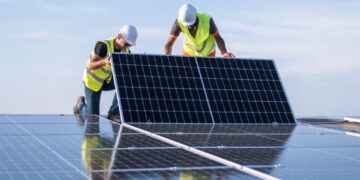The Renewable Energy Policy Network for the 21st Century (REN21) has said new wind power installations totalled more than 52 Gigawatt in 2017, a drop from 55 gigawatt added in 2016.
In its “Global renewable energy capacity and biofuel production, 2017 report” , it said this was only just over half of the 98GW of solar PV installed last year and less than new additions in 2015 (64GW) and 2016 (55GW).
The contraction in wind power installations was mostly due to less capacity being added in China, REN21 stated in its global status report.
Overall, new renewable power (178GW) accounted for 70 percent of net additions to power generating capacity in 2017.
Researchers also found that more solar PV capacity was added than the combined additions of coal, natural gas and nuclear power in 2017.
REN21 concluded that “the electricity transition is well under way” as renewable sources such as wind and solar PV installations increase and become increasingly cost-competitive.
However, energy-related CO2 emissions rose by 1.4 percent compared to 2016 as energy demand increased due to economic and population growth, the researchers stated.
This rise in emissions came despite investment in renewable power capacity being twice that in new fossil fuels and nuclear power combined.
More than two-thirds of investments in power generation in 2017 were in renewables, REN21 added, with nearly 75 percent of this being concentrated in China, Europe and the US.
The report said wind deployment was driven by its cost-competitiveness and potential environmental benefits.
They added: “Around the world, wind power is quickly becoming a mature and cost-competitive technology.”
However, the market faces challenges as it matures.
“Increased competition and the scramble for market share in 2017 came at the expense of profits throughout the supply chain, with several large manufacturers seeing their turbine orders increase but their profits decline,” REN21 said.























